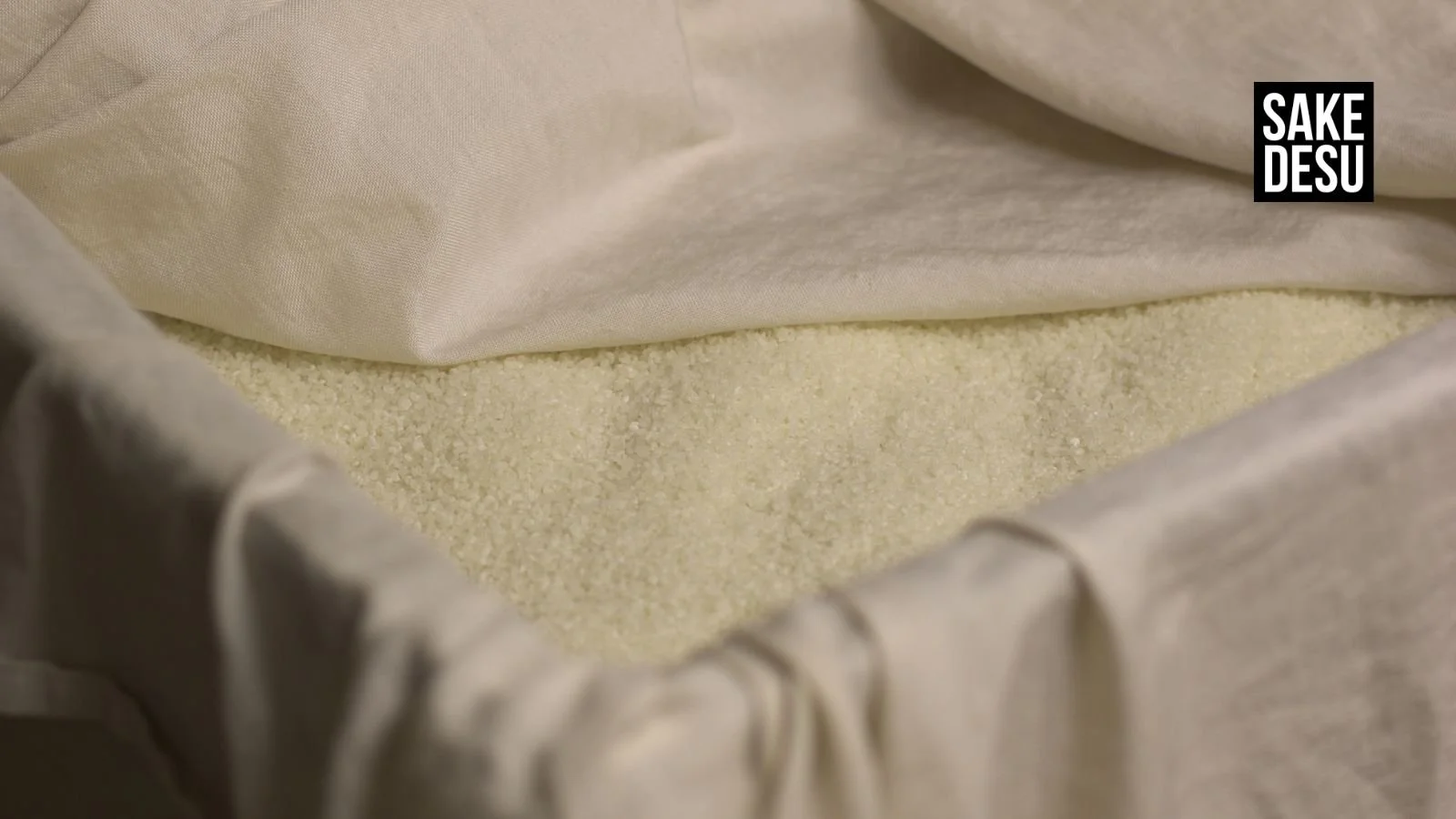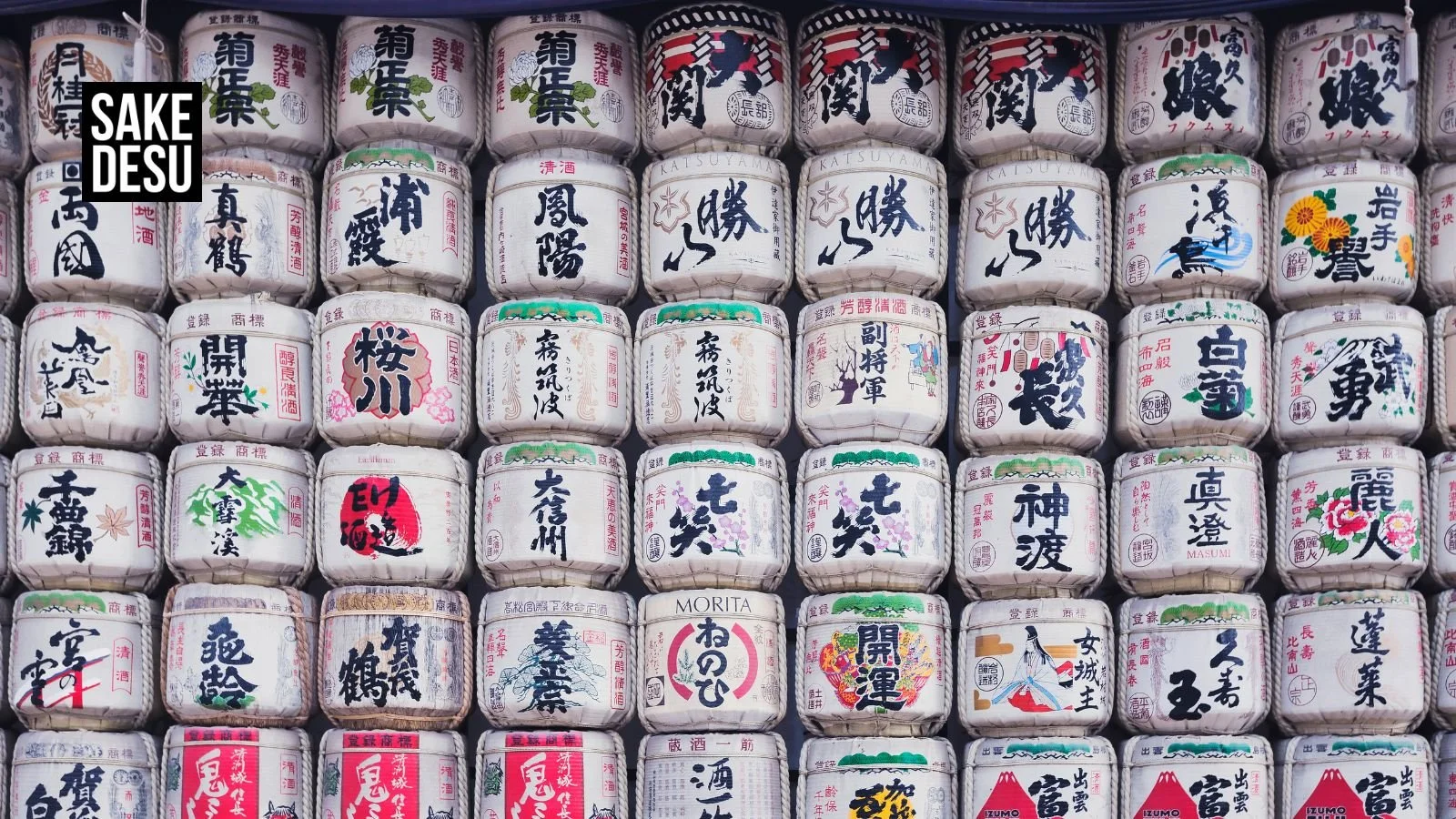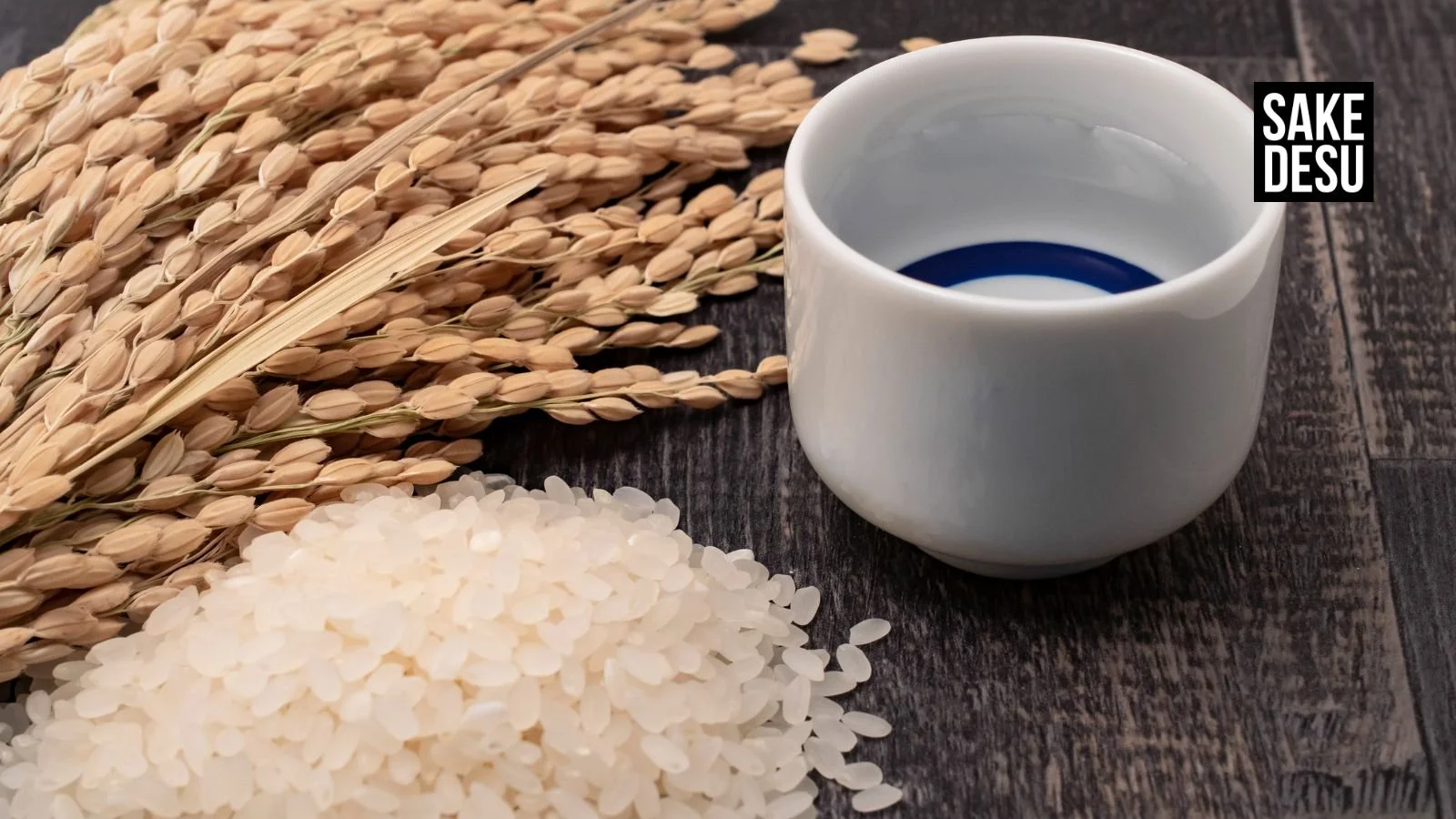Sake Brewing Process: Traditions & Techniques
How to make sake
Learn about the interesting world of sake, a famous Japanese drink that combines centuries-old customs with the fine art of brewing. Beyond its status as a cultural icon, Sake represents a unique harmony between nature and craftsmanship.
This blog post invites you to uncover the intricacies of sake brewing, from the careful selection of rice to the complex fermentation that imbues Sake with its distinctive flavors. Prepare to deepen your appreciation for this ancient craft and explore the meticulous processes that transform simple ingredients into an exquisite symphony of taste.
What is the Process of Making Sake?
With its deep roots in Japanese tradition, Sake stands out not just as an alcoholic beverage but as a symbol of cultural heritage. Produced mainly from polished rice, this drink is the culmination of an age-old brewing process showcasing sake brewers' prowess.
These artisans balance age-old methods with slight innovations, crafting a drink that's diverse in flavor and rich in history.
Step 1: Selecting and Preparing the Rice
Every bottle of Sake starts with selecting the suitable rice. Unlike table rice, sake rice (shuzo kotekimai) is chosen for its larger grains and higher starch content, which are ideal for brewing.
It's important to note the amount of rice polishing; the more the rice is polished, the smoother the sake tastes. After being carefully washed and soaked, each rice grain is prepared to embark on its transformation journey.
Step 2: Koji Cultivation
Koji, a type of mold, is pivotal in the sake-making process. It's sprinkled over steamed rice to convert starches into sugars. This step requires precise control over temperature and humidity to foster proper koji growth. It's this stage that sets the foundation for the distinctive flavor profile of fresh Sake.
Step 3: Fermentation
What sets Sake apart is its multiple parallel fermentation, a process where starch conversion to sugar and sugar conversion to alcohol happen simultaneously. This complex dance, orchestrated within large tanks, depends heavily on the brewer's skill in maintaining an optimal environment for both koji and yeast.
This stage's duration and conditions significantly influence the Sake's final character.
Step 4: Pressing, Filtering, and Bottling
Post-fermentation, the liquid is pressed away from the solid sake lees, using methods that each leave their mark on the Sake's final taste. Following filtration to ensure purity, the Sake might be pasteurized before entering a period of aging.
This stage allows the flavors to integrate and develop, culminating in the bottling of Sake that's ready to be savored by enthusiasts around the globe.
Sake brewing is more than just a process; it's an art form that blends tradition with the nuanced art of craftsmanship. By understanding the careful steps and dedication involved in creating Sake, we can better appreciate this classic beverage's depth and variety.
Whether you're a seasoned sake lover or new to its charms, there's always something new to discover in the world of Sake.
Is Sake Brewed or Fermented?
When it comes to Sake, a staple of Japanese culture, the process behind its creation often sparks curiosity. Is it brewed or fermented? While the lines might seem blurred, Sake's production process is a fascinating blend of both, characterized by its unique approach to transforming rice into a beloved alcoholic beverage.
The Unique Case of Sake
Unlike beer, where the transformation of starch into sugar and then into alcohol occurs in distinct steps, sake production involves a unique method known as multiple parallel fermentation. This process, facilitated by koji and yeast within the sake mash, allows for the simultaneous conversion of starches into sugars and sugars into alcohol.
This intricate dance of elements gives Sake its distinctive taste, ranging from sweet and aromatic to dry and rich, and adding a yeast starter further nuances the flavor profile, demonstrating the depth of craftsmanship and tradition in each bottle.
How Long is Sake Brewed?
The duration of the sake brewing process is a critical factor, with the entire production process, from rice steaming to bottling, typically spanning four to six months.
This period begins with the careful selection and preparation of the rice, moving through stages like koji making, where koji rice becomes the catalyst for fermentation and then onto the main event: the fermentation itself.
Variations in Brewing Time
The duration of fermentation greatly influences the character of the Sake. For example, premium sakes like Daiginjo often undergo a longer fermentation at cooler temperatures to refine their sophisticated flavors and aromas.
On the other hand, some sakes are designed to be enjoyed young, capturing a fresh and lively essence. Seasonal changes also play a part, with brewers adjusting their processes to take advantage of the ideal conditions for fermentation.
To Pasteurize or Not?
A significant decision in the sake production process is whether the Sake undergoes pasteurization. Most Sake is pasteurized to halt fermentation and stabilize the flavor. Still, there's also a growing appreciation for unpasteurized or raw Sake, which offers a different, often more vibrant taste profile.
Similarly, undiluted Sake presents a more robust and fuller flavor, showcasing the versatility and range that Sake has to offer.
What is the Most Important Ingredient in Sake?
The Significance of Rice
In the realm of Japanese Sake, rice isn't merely an ingredient; it's the essence of this beloved beverage. The choice of rice is fundamental to sake quality, with certain varieties like Yamada Nishiki and Gohyakumangoku standing out for their exceptional brewing properties.
These types are favored for their large rice kernels that house a rich starch content, crucial for fermentation, in their core.
Water, Koji, and Yeast
Although rice stars in the production, the harmony of water, koji fungus, and yeast cells defines the Sake's flavor and aroma. Water's role is crucial, forming most of the drink and influencing the outcome with its mineral makeup. The koji fungus then transforms rice starch into sugars ready for fermentation.
Finally, yeast cells are the agents of alcohol production, infusing the Sake with its aromatic bouquet. The interaction among these elements is a delicate balance, key to crafting Sake that resonates with tradition and quality.
What is Sake Rice and How is Sake Prepared from It?
Sake rice, or shuzo kotekimai, sets itself apart from everyday table rice with its unique characteristics: larger grains, a central starchy core known as shinpaku, and minimal protein and lipid content.
These traits make it ideal for absorbing water and fermenting it into high-quality Sake. Top-tier sake rice varieties are renowned for their ability to enhance Sake's flavor profile and clarity, making them highly sought after by breweries.
From Rice to Sake
The transformation from rice to Sake is a fascinating process, beginning with the meticulous milling or polishing of the rice grains. This step is very important because it removes the grain's outer layers.
These layers contain proteins and fats that can change the taste and brightness of the Sake. The degree of milling significantly influences the style and quality of the Sake, with premium varieties often having a higher milling rate.
Once milled, the rice is washed and soaked precisely, as the water absorption rate directly impacts the fermentation process. It's then steamed to the perfect consistency, not too soft or too hard, allowing the koji mold to convert the rice's starches into sugars effectively. This steamed rice is the foundation for koji cultivation, the next critical step in sake brewing.
Final Thoughts
Sake brewing is a meticulous blend of age-old tradition and thoughtful innovation, where the devotion to quality ingredients and a detailed process yields a drink of exceptional character. From the initial choice of rice to the precise moment of bottling, each step showcases the brewer's commitment and skill.
This harmonious mix of art and science elevates Sake beyond a mere beverage to a captivating experience. As we've delved into the sake production journey, the diversity within the sake world becomes evident, shaped by the brewer's selections from rice type, its rice polishing rate, and the fermentation methods applied.
This variety mirrors the richness of the brewing landscape, inviting enthusiasts to explore and savor the distinct flavors and stories each Sake presents. Sake brewing intertwines tradition and innovation, creating flavors that tell a story in every sip. Why not enjoy this journey in the comfort of your home?
SakeDesu.com offers an array of premium Sake, each with a unique taste and heritage. Experience the artistry of Sake by browsing our collection and select a bottle that speaks to you. You’ll discover that every bottle is a piece of tradition awaiting to be discovered.
FAQs
What differentiates premium sake from regular sake?
Premium sakes, distinguished by labels like Junmai and Daiginjo, stand out through labor-intensive production techniques, including a higher rice polishing rate that enhances the Sake's taste by focusing on the starch-rich core of the rice grain. These premium varieties often forgo added alcohol, showcasing the pure essence of the rice.
Can sake be brewed at home, and what are the challenges?
Though brewing sake at home can be undertaken, it comes with challenges, such as mastering koji cultivation and managing the detailed multiple parallel fermentation process. Additionally, legal restrictions in some areas may limit home brewing efforts.
How should sake be stored and served to preserve its quality?
Sake should be kept in a cool, dark environment, shielded from heat and sunlight to maintain its quality. The ideal serving temperature varies with the sake type—some are best chilled, and others benefit from a slight warming to bring out their full-bodied flavors.
Why is water quality crucial in sake brewing?
Water's mineral composition plays a critical role in fermentation and the final flavor of the Sake. Soft water generally yields sweet, delicate sakes, whereas hard water can create sakes with a drier, more robust taste.
FAQs
-
Premium sakes, distinguished by labels like Junmai and Daiginjo, stand out through labor-intensive production techniques, including a higher rice polishing rate that enhances the Sake's taste by focusing on the starch-rich core of the rice grain. These premium varieties often forgo added alcohol, showcasing the pure essence of the rice.
-
Though brewing sake at home can be undertaken, it comes with challenges, such as mastering koji cultivation and managing the detailed multiple parallel fermentation process. Additionally, legal restrictions in some areas may limit home brewing efforts.
-
Sake should be kept in a cool, dark environment, shielded from heat and sunlight to maintain its quality. The ideal serving temperature varies with the sake type—some are best chilled, and others benefit from a slight warming to bring out their full-bodied flavors.
-
Water's mineral composition plays a critical role in fermentation and the final flavor of the Sake. Soft water generally yields sweet, delicate sakes, whereas hard water can create sakes with a drier, more robust taste.
-
Historically, Sake was brewed in winter, utilizing the cold to regulate fermentation. While modern methods allow for year-round production, the seasonal approach still influences the flavor of traditional sakes, with some brewers adhering to these cycles for their unique taste profiles.





